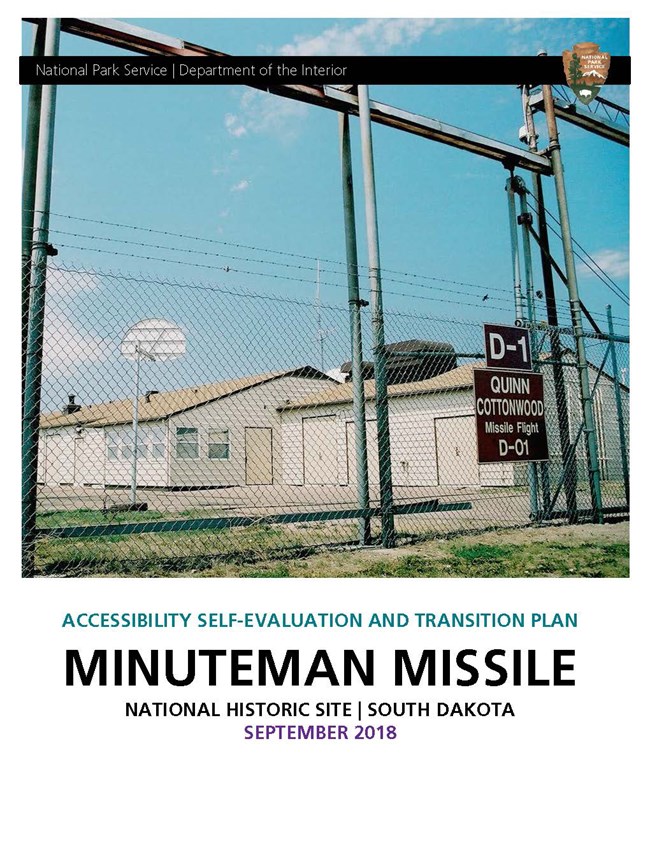Accessible Topside TourMinuteman Missile National Historic Site is unable to offer ranger-guided Delta-01 tours at this time. Existing tour reservations will be honored. An alternative virtual tour of the Delta-01 Launch Control Facility is available online or at the visitor center as staffing allows. Individuals with specific accessibility requirements are encouraged contact the park in advance to discuss their needs. Please contact park staff at 605-433-5552 for more information. Sign Language ServicesAn American Sign Language Interpreter may be arranged to accompany your visit; due to the park's rural location, please contact the park at least one week in advance of your visit to make arrangements. Parking
Buildings
Service Animals

Accessibility Self-Evaluation and Transistion PlanMinuteman Missile National Historic Site's Accessibility Self-Evaluation and Transition Plan (SETP) includes findings from the self-evaluation process, as well as a plan for improving accessibility parkwide. The Accessibility Self-Evaluation and Transition Plan resulted from the work of an NPS interdisciplinary team, including planning, design, and construction professionals; and interpretive, resource, visitor safety, maintenance, and accessibility specialists. Site plans, photographs, and specific actions for identified park areas were developed. Associated time frames and implementation strategies were established to assist NPS park staff in scheduling and performing required actions and to document completed work. Park policies, practices, communication, and training needs were also addressed. The goals of the plan are to 1) document existing park barriers to accessibility for people with disabilities, 2) provide an effective approach for upgrading facilities, services, activities, and programs, and 3) instill a culture around creating universal access.Accessibility Self-Evaluation and Transition Plan - September 2018 (2.39 MB PDF) |
Last updated: November 18, 2025
